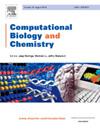Identification and validation of biomarkers in Alzheimer's disease based on machine learning algorithms and single-cell sequencing analysis
IF 2.6
4区 生物学
Q2 BIOLOGY
引用次数: 0
Abstract
Objective
Alzheimer's disease (AD) is a complicated neurodegenerative disease with unknown pathogenesis. Identifying possible diagnostic markers of AD is essential to elucidate its mechanisms and facilitate diagnosis.
Methods
A total of 295 samples (153 AD and 142 normal) were analyzed from two datasets (GSE122063 and GSE132903) in the Gene Express Omnibus (GEO) database. Differentially expressed genes (DEGs) between groups were identified and dimensionality reduction was applied to identify feature genes (key genes) using three algorithms of machine learning including least absolute shrinkage and selection operator (LASSO), support vector machine-recursive feature elimination (SVM-RFE), and Random forest (RF). In addition, we obtained sample data from single-cell RNA datasets GSE157827, GSE167490, and GSE174367 to classify cells into different types and examined changes in gene expression and their correlation with AD progression. Immunofluorescence assay was used to verify the expression of key genes in animal experiments.
Results
To identify diagnostic genes associated with AD, we analyzed two datasets and identified 379 DEGs which might be related to the onset of AD, and 115 of them were up-regulated and 264 down-regulated. Three algorithms of machine learning were adopted to reduce the dimensions of these DEGs and finally six core DEGs CD86, SCG3, VGF, PRKCG, SPP1, and TPI1 of AD were identified. Diagnostic analyses showed that SCG3 was substantially down-regulated in the AD group, and its AUC was higher in both the training and validation sets (0.845, 0.927, and 0.917, respectively). Transcriptome sequencing results further revealed that SCG3 expression was down-regulated in multiple cell types in the AD group and SCG3 expression in the hippocampus was found significantly reduced in the AD group.
Conclusions
This study systematically identified and validated the potential of SCG3 as an early diagnostic biomarker for AD through several technical strategies. The findings provided new biomarkers for early detection of AD and laid a foundation for future clinical applications.
基于机器学习算法和单细胞测序分析的阿尔茨海默病生物标志物鉴定和验证
目的阿尔茨海默病(AD)是一种复杂的神经退行性疾病,发病机制尚不清楚。识别AD可能的诊断标记对于阐明其机制和促进诊断至关重要。方法从Gene Express Omnibus (GEO)数据库的GSE122063和GSE132903两个数据集中对295份样本(AD 153份,normal 142份)进行分析。采用最小绝对收缩和选择算子(LASSO)、支持向量机递归特征消除(SVM-RFE)和随机森林(RF)三种机器学习算法识别组间差异表达基因(DEGs),并应用降维技术识别特征基因(关键基因)。此外,我们从单细胞RNA数据集GSE157827、GSE167490和GSE174367中获得样本数据,将细胞分为不同类型,并检测基因表达的变化及其与AD进展的相关性。采用免疫荧光法验证关键基因在动物实验中的表达。结果通过对两个数据集的分析,鉴定出379个可能与AD发病相关的基因,其中115个基因表达上调,264个基因表达下调。采用三种机器学习算法对这些DEGs进行降维,最终识别出AD的六个核心DEGs CD86、SCG3、VGF、PRKCG、SPP1和TPI1。诊断分析显示,SCG3在AD组中显著下调,其AUC在训练集和验证集均较高(分别为0.845、0.927和0.917)。转录组测序结果进一步显示,AD组SCG3在多种细胞类型中表达下调,AD组海马中SCG3表达显著降低。本研究通过几种技术策略系统地确定并验证了SCG3作为AD早期诊断生物标志物的潜力。研究结果为AD的早期检测提供了新的生物标志物,为今后的临床应用奠定了基础。
本文章由计算机程序翻译,如有差异,请以英文原文为准。
求助全文
约1分钟内获得全文
求助全文
来源期刊

Computational Biology and Chemistry
生物-计算机:跨学科应用
CiteScore
6.10
自引率
3.20%
发文量
142
审稿时长
24 days
期刊介绍:
Computational Biology and Chemistry publishes original research papers and review articles in all areas of computational life sciences. High quality research contributions with a major computational component in the areas of nucleic acid and protein sequence research, molecular evolution, molecular genetics (functional genomics and proteomics), theory and practice of either biology-specific or chemical-biology-specific modeling, and structural biology of nucleic acids and proteins are particularly welcome. Exceptionally high quality research work in bioinformatics, systems biology, ecology, computational pharmacology, metabolism, biomedical engineering, epidemiology, and statistical genetics will also be considered.
Given their inherent uncertainty, protein modeling and molecular docking studies should be thoroughly validated. In the absence of experimental results for validation, the use of molecular dynamics simulations along with detailed free energy calculations, for example, should be used as complementary techniques to support the major conclusions. Submissions of premature modeling exercises without additional biological insights will not be considered.
Review articles will generally be commissioned by the editors and should not be submitted to the journal without explicit invitation. However prospective authors are welcome to send a brief (one to three pages) synopsis, which will be evaluated by the editors.
 求助内容:
求助内容: 应助结果提醒方式:
应助结果提醒方式:


